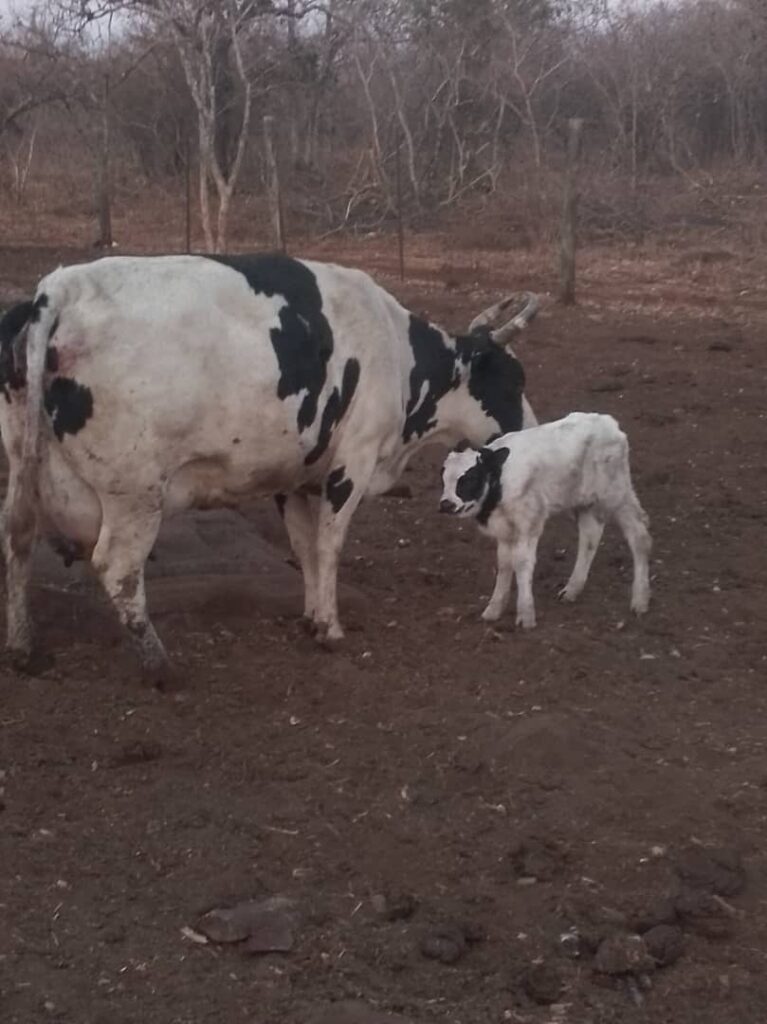By Linda Soko Tembo
In Palabana, a quiet farming community east of Lusaka, tensions are rising over a proposed limestone mine. Chinese-owned Evergreat Mining says the project will create 60 jobs. But residents say it threatens a dairy industry that supports over 3,000 people, as well as farmland and critical Zesco power infrastructure nearby.

Evergreat holds a 20-year licence for 1,236 hectares in Nkomesha Chiefdom, valued at US$5 million. The size of the land is about 1,700 football pitches put together. However, the land is officially zoned for agriculture, and the Chongwe council previously rejected an application to convert it for mining.
Evergreat Investment and Company Limited, registered in 2019, is owned by Chinese nationals Shi Zhengyang and Qu Sen, who are listed as both directors and shareholders, according to PACRA records.
A MakanDay investigation found the proposed quarry is just 200 metres from Zesco’s high-voltage pylons that transmit electricity from Kariba to the Copperbelt.
Zesco says it will conduct a technical assessment before any mining begins. The Zambia Environmental Management Agency (ZEMA) has yet to decide whether the project will go ahead.
At a public hearing on October 3, dairy farmers, youths, business owners and civic leaders debated the project. Supporters, mostly young people and traders, welcomed promised jobs. Farmers pushed back, saying the mine would destroy grazing land, pollute water, and collapse an industry that produces 11,000 litres of milk daily, worth an estimated US$2.5 million a year.
Presenting on behalf the company, Evergreat engineer Timothy Goma said the company plans open-pit mining, extracting 83,000 tonnes of limestone per month.
“No explosives will be stored on-site. All blasting will be conducted by licensed experts and will follow strict safety and environmental protocols,” Goma assured.
He explained that the project site is located within Nkomesha Chiefdom, approximately 20 kilometres south of Chongwe town and 5 kilometres off Leopards Hill Road, near Palabana University, Palabana Market and Cross Park gated community.
But according to the company’s own Environmental Impact Assessment (EIA), the land-use change must still be approved before a quarry licence can be issued. Goma confirmed the first application was rejected.
After the hearing, a dairy farmer, who requested anonymity, explained that Palabana was initially established as a government resettlement scheme for dairy farming. Today, the community produces around 11,000 litres of milk each day, or roughly 300,000 litres a month, generating an estimated US$2.5 million annually.
“While the mine is proposing to create 60 jobs, the dairy industry already supports more than 3,000 people in and around Palabana,” the farmer said.
He added that in 2023, the developer applied to the Chongwe Council to change the land use from agriculture to mining, but the request was rejected because the area is zoned for agricultural purposes.
“Now in 2025, the project has resurfaced. Despite strong community opposition, the company is still pushing to proceed,” he said.
The EIA lists possible benefits such as jobs and local business opportunities. But it also warns of land degradation, air and water pollution, noise, soil erosion and irreversible landscape changes.
The proposed site is close to informal stone-crushing activities that many families, including children, depend on for income. Residents fear they will be displaced if large-scale mining goes ahead.
While the report claims that many of these impacts could be mitigated through strong environmental management plans, it concedes that permanent changes to the landscape would be unavoidable.
The area is dotted with large quarry stones and lies close to a community where many residents rely on small-scale stone crushing for survival.
Families, including children as young as 9 to 12 years old, are often seen helping to crush stones at household level. Once a large company assumes control of quarry operations, however, these local residents risk losing their only source of income.
Zesco Managing Director, Justin Loongo, confirmed to MakanDay that the power utility will conduct a detailed technical assessment before any mining begins.
“We need to have a look at the site and see what is obtaining on the ground. Before blasting starts, all necessary tests must be done to assess the impact on the surroundings,” Loongo said.
Speaking on behalf of Senior Chieftainess Nkomeshya Mukamambo II, Princess Cholwe Nkomesha said the royal establishment has formally opposed the mine.
She cited the Kasisi mine as an example of how similar projects have led to air pollution and environmental degradation.
“In Kasisi, the community has not benefited despite initial promises. The mine operates 20 to 30 trucks every day, causing dust and disruption. We cannot repeat the same mistake in Palabana,” she said.
She added that the chiefdom supports development — but not at the expense of livelihoods and the environment.
ZEMA’s Acting Principal Inspector Tobias Kanyanga said the project is still under review.
“The ZEMA board, which meets once a month, will review the hearing report and either approve or reject the project. Once a decision is made, a letter will be issued explaining the reasons,” Kanyanga said.
He added that by law, ZEMA must communicate its decision to the community within 15 days after the board meeting.
“The project is still under the EIA process. The public hearing is just one component that informs the final decision,” he said.
For Palabana residents, the debate is not just about development, it’s about survival.
Discover more from MAKANDAY
Subscribe to get the latest posts sent to your email.